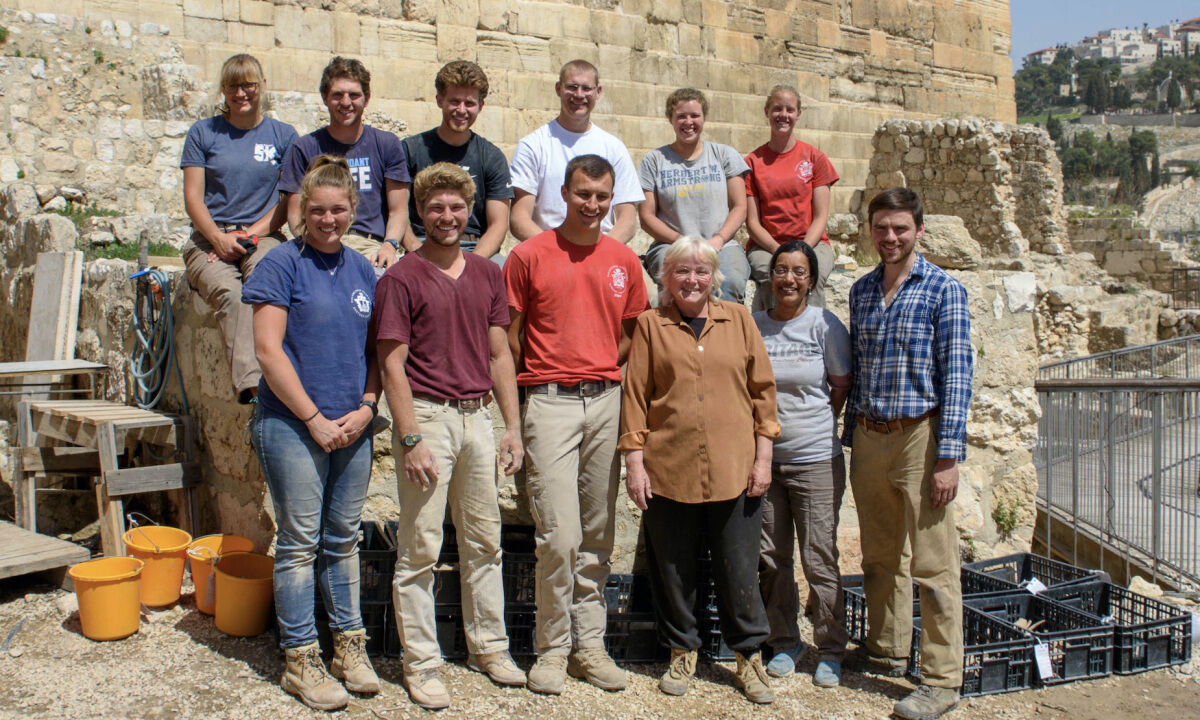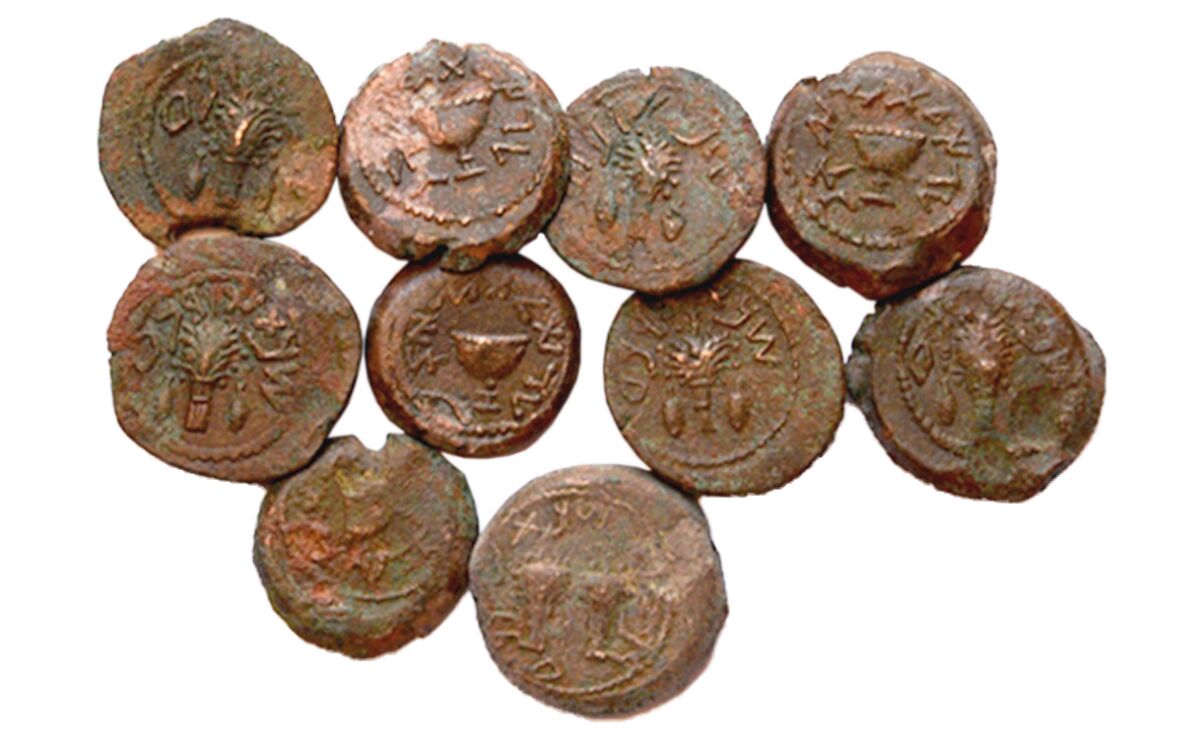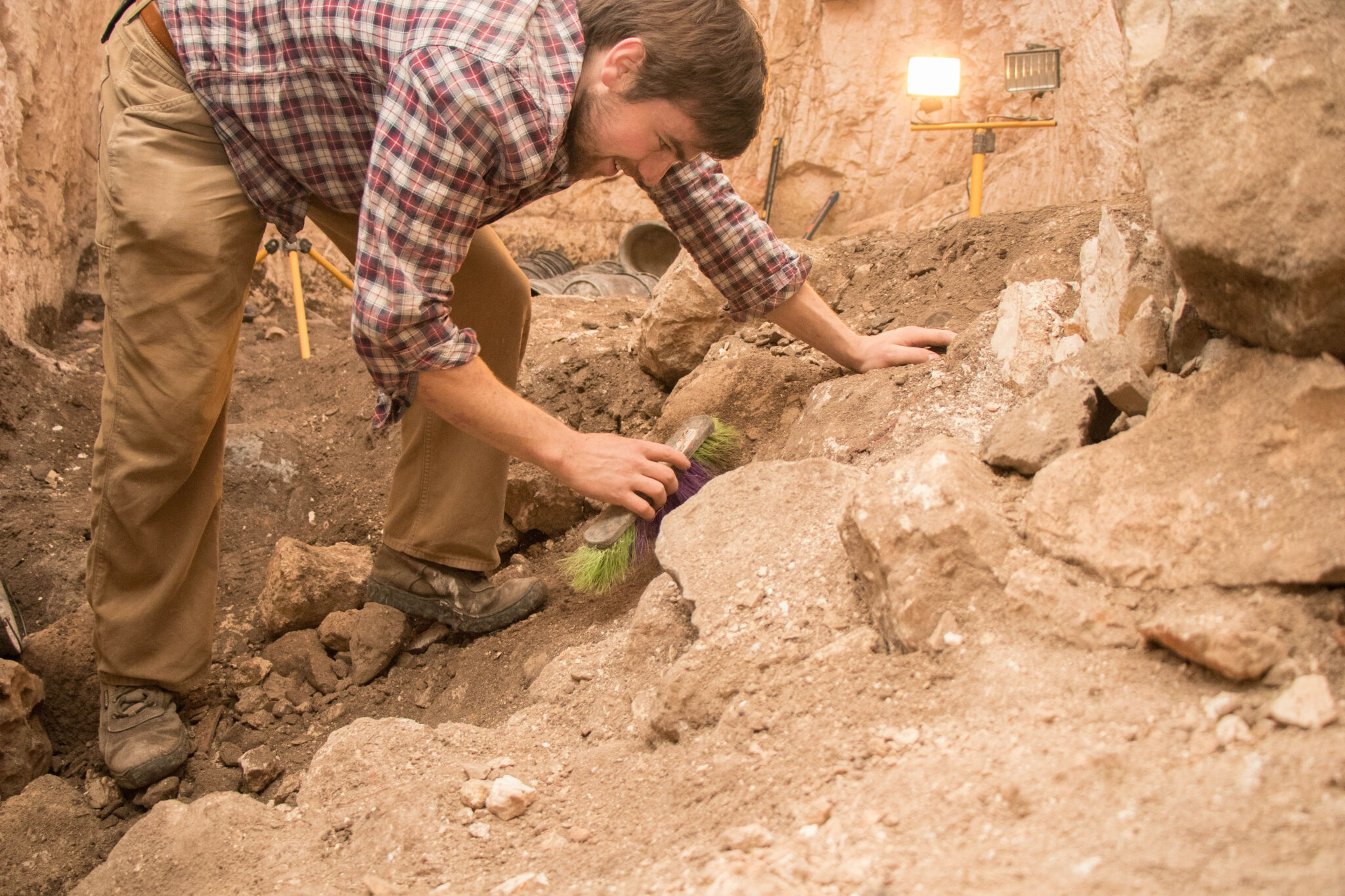Phase 2c of the Ophel excavation was extra special, as this was the first excavation funded entirely by Herbert W. Armstrong College. Twelve Armstrong College students and Armstrong Institute of Biblical Archaeology staff were involved in this three-month dig.
Dr. Mazar and her team broke ground on January 2018, concluding the excavation in March. Together with Dr. Mazar’s staff, aiba is currently processing and documenting the remainder of finds from this phase in preparation for the final publication report.

Byzantine structure: The dig was divided into two main areas. Archaeologist Amir Cohen-Klonymous was area supervisor over Area D, which contained the Byzantine structure where Dr. Mazar previously discovered a hoard of rare gold coins, silver and gold jewelry, and the remarkable gold medallion.
Dr. Mazar said it was her goal in 2018 “to learn more about the nature of the building [in which] these people were hiding their treasure.”
Water cistern: Christopher Eames supervised the second area, Area M, a 15-by-8-meter cavern. The cave was discovered in near-pristine condition. It’s unclear exactly what the cave was initially used for. We do know at one point it was used as a water cistern, as evidenced by the plaster on the inside of the cave.
The cistern was eventually filled and then used by Jews hiding from the Roman government around the time of the destruction of Jerusalem in 70 a.d.
The Jewish historian Josephus wrote that the Jews descended into tunnels and caves in order to hide during the closing moments of the siege against Jerusalem. This was the case on the Ophel, which is evidenced by this excavation’s major discovery.
Major discovery: In March 2018, in a special announcement for the Jewish holiday of Pesach (Passover), Dr. Mazar announced the discovery of dozens of Jewish Revolt coins from c.e. 66 to 70. Mazar’s discovery is one of the largest caches of Year 4 (c.e. 70) coins ever found.

The coins were found alongside broken pottery vessels, including jars and cooking pots. The undisturbed cave, said Mazar, created a “time capsule” of Jewish life during the revolt. “It’s not a usual phenomena that we can come to such a closed cave,” she said, “untouched [for] 2,000 years, including the very last remains of life of the people who were besieged in Jerusalem, suffered in Jerusalem, till the very last minute of the Second Temple Period.”
Learn more: A detailed synopsis of the major discoveries from all three phases of the Ophel excavations can be found in our article, “Discoveries of Eilat Mazar: The Ophel.” Also read Brent Nagtegaal’s article “Rare Jewish Revolt Coins Discovered in Jerusalem Cave” to learn more about the revolt coins.
